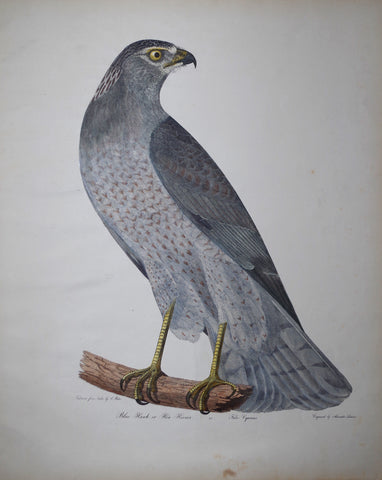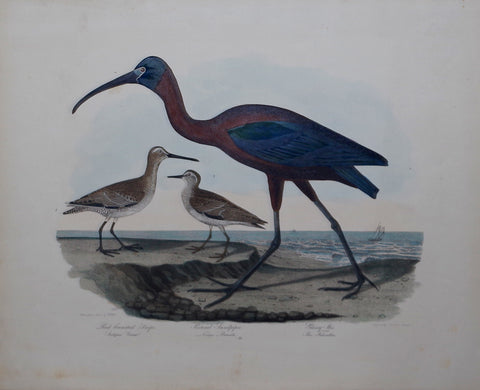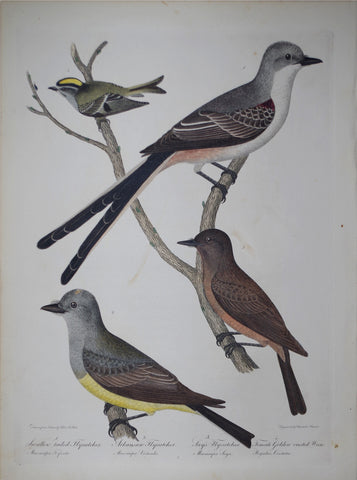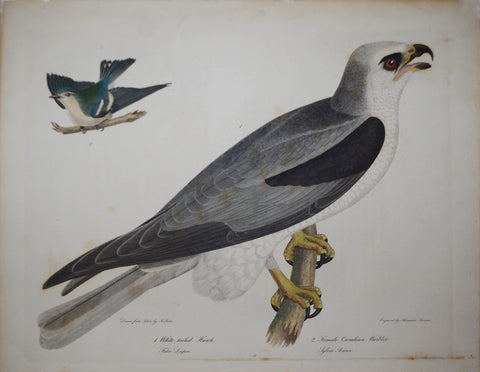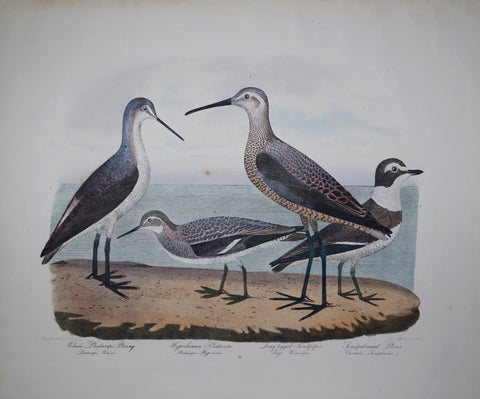Search By Artist
Alexander Wilson (1766-1813)
From American Ornithology; or, The Natural History of the Birds of the United States
Philadelphia: Bradsford & Innskeep, 1808-1814
Engravings with original hand-coloring.
Alexander Wilson's American Ornithology is the first exceptional book devoted to the subject of American bird life, and the first to be published in the United States by an American citizen. Wilson's seminal publication was an artistic, scientific, and commercial undertaking of magisterial proportions. His 76 plates depicted 320 figures of 262 species, including 39 that were entirely new and 23 that were for the first time described sufficiently to distinguish them from European species with which they had been confused. Great care was lavished on the illustrations, and the quality of paper, engraving, and coloring was of the highest standard. The images are of considerable charm, as each species is depicted with character and animation, including some that have since gone extinct, such as the Passenger Pigeon.
The son of a weaver, Wilson was born in Scotland in 1766, and at the age of thirteen he commenced an apprenticeship to learn his father's trade. In his early 20s, he abandoned weaving in order to make his way as a poet, publishing a slim volume of verses in 1790. Yet when he lampooned a local mill-owner in one of his satirical works, he found himself in prison. Following his release, he moved in 1794 to the United States, perhaps lured by the promise of free speech, but more certainly by the hopes of greater prosperity. For about ten years he worked as a school teacher in New Jersey and eastern Pennsylvania. In 1802 he took over the school at Gray's Ferry on the Schuylkill River just below Philadelphia, where he was fortunate to have as a neighbor the naturalist William Bartram (1739 - 1823). Bartram's botanical and zoological library was enthralling to the young immigrant. It was Bartram who nurtured Wilson's nascent interest in ornithology, and who helped him learn to draw birds, offering Wilson the use of his library so he could study illustrations of American birds by such 18th-century naturalists as Mark Catesby and George Edwards.
Wilson's drawings for the American Ornithology are remarkably fine for an artist who learned to draw so late in life. They remain essentially specimen drawings, stressing anatomical features over behavior or habitat as the defining characteristics of a species. As the primary engraver of the plates for American Ornithology, Alexander Lawson composed larger, more integrated scenes from Wilson's material by creating collages with the individual drawings and filling in background details before engraving the plates. The fusion of Wilson's drawings and Lawson's compositions was one of science and art, an intersection that resulted in this rare and unique landmark in the early history of American color-plate books. Wilson's work rendered all previous books on the subject obsolete, and justly established him as the great pioneer ornithologist of America.

